Published: 04 Jan 2022
How to Develop A Solid Regression Testing Strategy for Your Business?
Last Updated: 02 Apr 2024
Content
1. An overview of various regression testing types
2. When should businesses take up regression testing?
3. What is the significance of regression testing in agile?
4. What is the significance of regression testing in DevOps?
5. Regression testing benefits overview
6. Benefits of automated regression testing
7. What is a regression testing strategy?
8. How to develop a solid regression testing strategy for your business?
9. Benefits for businesses by adopting an effective regression testing strategy
10. Conclusion
Today’s businesses need high-quality software to deliver a great customer experience. Businesses often make frequent changes to the software features/functionalities based on the user requirements to deliver desired software to the customers. Typically, due to these frequent code changes, unknowingly, the existing functionalities of the software might get affected, or new bugs might also crop up. Therefore, businesses should leverage end-to-end regression testing in both agile and DevOps adoptions to ensure the proper functioning of the software even after frequent code changes. Moreover, businesses should follow an effective regression testing strategy while adopting regression testing to deliver high-quality software to customers.
An overview of various regression testing types
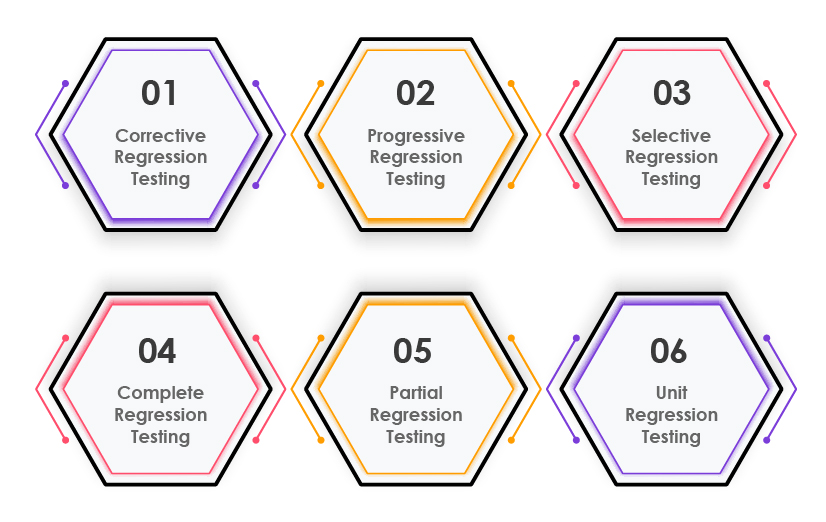
When should businesses take up regression testing?

This testing type should be taken up when:
• Bug/error is fixed in the software.
• A new feature or functionality is introduced into the software.
• The existing system is integrated with a new module or component.
• Requirement changes are initiated.
• UI changes are made in the software.
What is the significance of regression testing in agile?
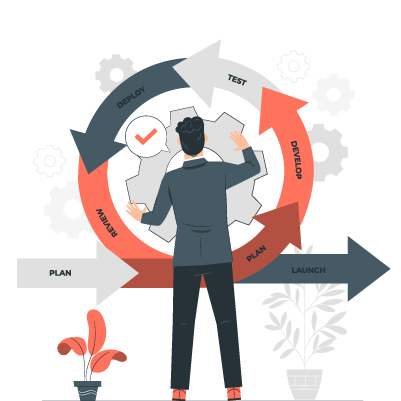
Agile methodology focuses on faster and iterative development, where the product is developed in sprints and features are rolled out in each cycle. Ideally, testing cycles are kept short for ensuring a proper balance between the sprint development and iterative testing cycles. In an agile environment, developers roll out features at a faster pace, and therefore it is necessary that regression testing should go hand in hand to deploy features.
In an agile environment, the developers develop new features or make any addition or improvement to the code, while simultaneously, on the other hand, the regression testing is done on all new and old features. This regression testing technique in an agile environment occurs in two ways: partial (iteration) and full (major) regression testing types. In partial regression testing, only the features developed during the iteration are tested, whereas, in the full or complete regression testing method, the entire software is tested before release. This black-box software testing method in an agile environment ensures better resolution of defects as the product is tested in sprints to ensure defect-free software.
What is the significance of regression testing in DevOps?

DevOps is an evolution of agile methodology and involves various stages, namely, Continuous Development, Continuous Integration, Continuous Testing, Continuous Delivery, Continuous Monitoring, and Continuous Feedback. DevOps ensures that software is built and tested continuously and defects are quickly fixed to ensure faster delivery of bug-free software.
In the DevOps environment, regression testing is done at each stage of the DevOps cycle and after every change. Whenever software changes are made, regression testing is performed to check the existing functionalities and new code changes to ensure the software works fine even after changes. In DevOps, a faster feedback loop helps with fixing the bugs at each stage before moving to the final production stage.
Thus, regression testing has great significance in the DevOps environment and ensures the delivery of robust and high-quality software even after frequent changes.
Regression testing benefits overview
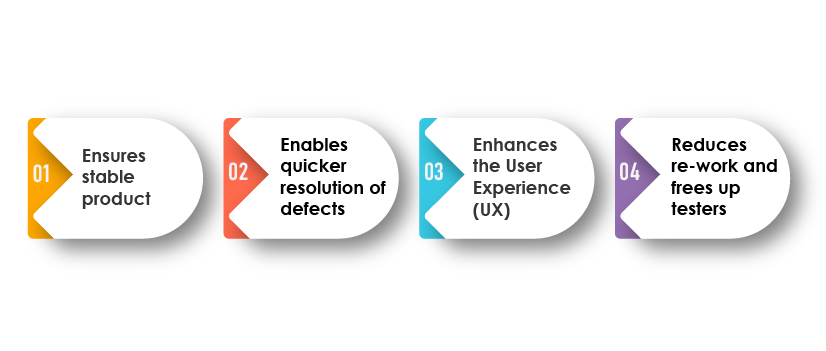
Ensures stable product:
In today’s agile environment, regression testing is taken up in sprints, which helps testers ensure build stability. In the DevOps environment, the product features and functionalities are continuously tested after every change, ensuring the software’s stability.
Enables quicker resolution of defects:
Regression software testing in agile and DevOps environments helps identify and resolve bugs earlier, enhancing the product quality.
Enhances the User Experience (UX):
Faster bug resolution and better test coverage ensured by regression testing in agile and DevOps make the product stable, ultimately enhancing the UX.
Reduces re-work and frees up testers:
Automating regression tests in agile and DevOps frees up testers and saves manual re-work. It saves a lot of time for testers, and they can be used for other critical activities.
Benefits of automated regression testing
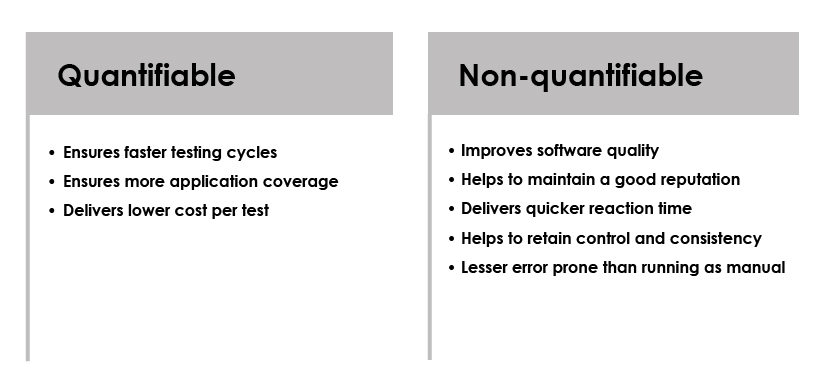
As businesses leverage regression testing in both agile and DevOps, it is critical to adopt and follow an effective regression testing strategy to achieve significant results.
What is a regression testing strategy?

A regression testing strategy is the action plan or an outline of steps that need to be followed to ensure the successful testing of software. The regression testing strategy includes details about test objectives, testing time, resources, methods, testing environment, how to make regression testing part of the vision, details about the release process, checkpoints, definitions, process of automated testing, RACI, recommended tools, and more. However, to prepare an effective regression testing strategy, careful planning and the right selection of software testing techniques are required to ensure the regression testing process moves in the right direction to deliver significant results.
How to develop a solid regression testing strategy for your business?
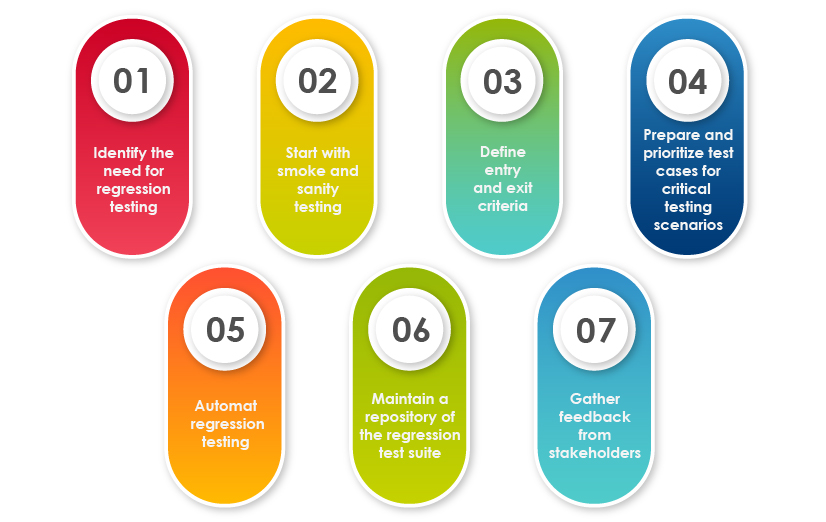
Identify the need for regression testing:
The first step is to identify the need for software regression testing. Ideally, as soon as the change takes place in software, the regression testing method should be taken up. The primary motive of this testing process is to check the existing functionalities of the software with the help of regression test scripts.
Start with smoke and sanity testing:
Even before starting the regression testing process, it is essential to perform smoke and sanity testing to save the tester’s time and effort. In the smoke and sanity testing, the basic and core features of the software are quickly tested to ensure it works fine. It helps testers know whether the build is stable or not and helps decide whether to push it for further testing processes.
Define entry and exit criteria:
Before starting the test, it is essential to define the entry and exit criteria. The entry and exit points should be such that the test objectives are synced with test requirements. Thus, defining the entry and exit points smoothens the testing process.
Prepare and prioritize test cases for critical testing scenarios:
Testers should identify the problematic areas in the software and the areas that need to be tested first. Moreover, testers should first prepare and prioritize test cases around problematic areas.
Automate regression testing:
Testers should identify the test cases that can be automated to achieve a successful regression testing cycle. By automating the regression tests, the software can be tested with tools. Test automation ensures better test coverage, early bug detection, faster releases, and saves testers time and effort.
Maintain a repository of the regression test suite:
Testers should maintain a repository of the regression test suite. As soon as any changes in the software are made, testers should create respective test cases and add those test cases to the repository. It is also necessary to remove obsolete test cases from the repository.
Gather feedback from stakeholders:
Once the test strategy is prepared, it should be shared with all stakeholders, including development teams. Also, feedback from stakeholders and team members should be taken regularly to make changes in the regression testing strategy as and when needed to ensure significant results.
Other factors to be considered for a solid regression testing strategy
• Make the automated regression testing pack part of the DevOps CI/CD.
• Plan for scheduling daily/ frequent automated runs.
• Consider ROI on manual efforts and cost involved.
• Define critical success factors of test automation.
• Track and measure the Metrics.
Benefits for businesses by adopting an effective regression testing strategy
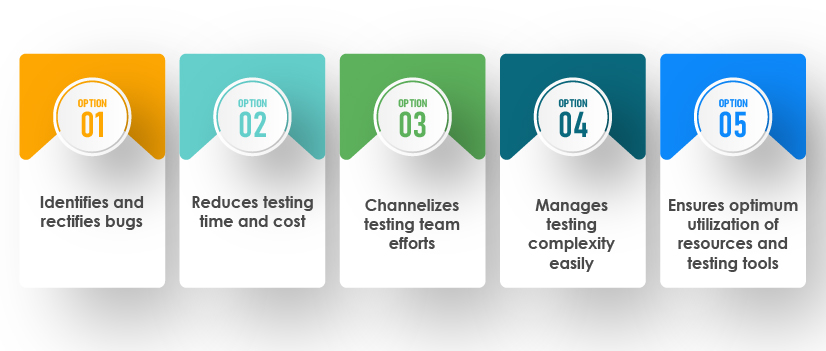
Identifies and rectifies bugs:
Whenever any change is introduced in the software, there are probable chances of new bugs getting introduced or old bugs getting reintroduced into the software. An effective regression testing process backed by a solid testing strategy is required to identify and rectify the bugs arising in software after frequent code changes.
Reduces testing time and cost:
An effective regression testing strategy ensures that the tests get completed in the minimum possible time so that businesses reach the market early. An efficient testing process ensures that the old bugs do not show up again and thus saves the cost involved in fixing bugs.
Channelizes testing team efforts:
A robust testing strategy clearly defines the roles and responsibilities of testers, avoids confusion, and ensures QA teams stay motivated and are up-to-date with the testing information. It ensures that the testing efforts of the teams are channelized in a proper direction so that effective testing results are obtained.
Manages testing complexity easily:
The regression testing process usually gets large and complex with time. A solid regression testing strategy defines managing and handling the complex regression test suites more efficiently and seamlessly.
Ensures optimum utilization of resources and testing tools:
A proper regression testing strategy involves careful planning to ensure that the teams know their roles and responsibilities well ahead. Proper regression testing tools and resources can be planned to get maximum benefits.
Conclusion:
Today’s businesses operate in a highly volatile market driven by ever-changing customer requirements. To satisfy the customers, businesses make every possible way to make their software more attractive and user-friendly. As businesses continue to make changes in their software, they should follow solid regression testing strategies and processes to ensure high-quality, defect-free software. Thus, businesses should leverage regression testing service from a next-gen QA and software testing services provider for achieving their desired high-quality software.